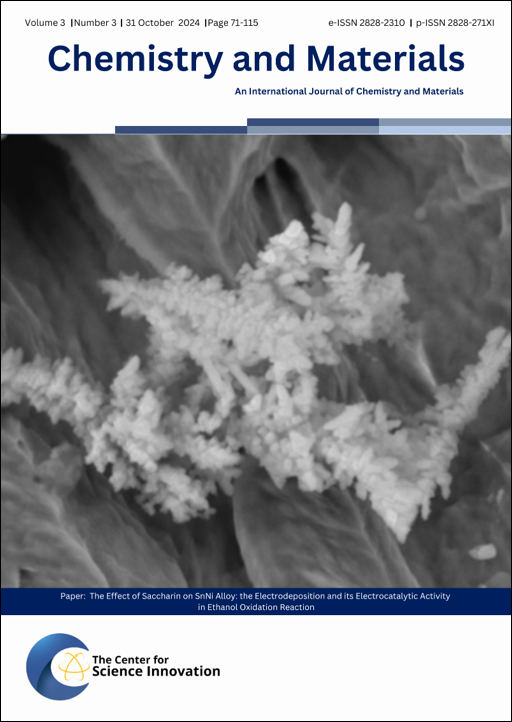Electrodeposition of Thin Film Cu-Zn-Sn Alloy for Water Splitting Application
DOI:
https://doi.org/10.56425/cma.v3i3.82Keywords:
electrodeposition, CZT alloy, water splittingAbstract
An energy transition to renewable energy sources is necessary due to the scarcity of fossil fuels and their detrimental effects on the environment. Water splitting process is one of the practical and effective way that does not occur spontaneously. This study investigates catalytic activity of Cu-Zn-Sn (CZT) photocatalyst in hydrogen evolution and oxygen evolution reaction. The CZT deposited with varied electrolyte’s pH of 6 and 9 on indium tin oxide substrate at the room temperature for 600 seconds. According to the X-ray diffraction patterns, there were Cu6Sn5, Cu5Zn8, and Sn metal phases with monoclinic, cubic, and cubic crystal systems. The scanning electron microscopy technique results of all CZT alloy sample showed a dense, non-uniform, and polycrystalline surface structure. The CZT alloys were found to have an average particle size of 0.35 μm. CZT alloys can produce a photocurrent density of 0.19 mA/cm² at a potential of 1.29 V vs RHE. the charge transfer resistance of CZT synthesized at pH 6 is lower (21.48 Ω) compared to pH 9 (28.36 Ω). The Tafel slope of HER for pH 9 CZT was -133 mV/dec, which was lower than that of pH 6 CZT (-88 mV/dec), indicating faster H2 production and corrosion resistance on pH 9 CZT.
Downloads
Published
Issue
Section
License
Copyright (c) 2024 Reinardo Ramawijaya Widakusuma, Fathir Azzaki Iradata, Mokhamad Ali Rizqi Maulana, Ikhwan Nur Rahman

This work is licensed under a Creative Commons Attribution 4.0 International License.



